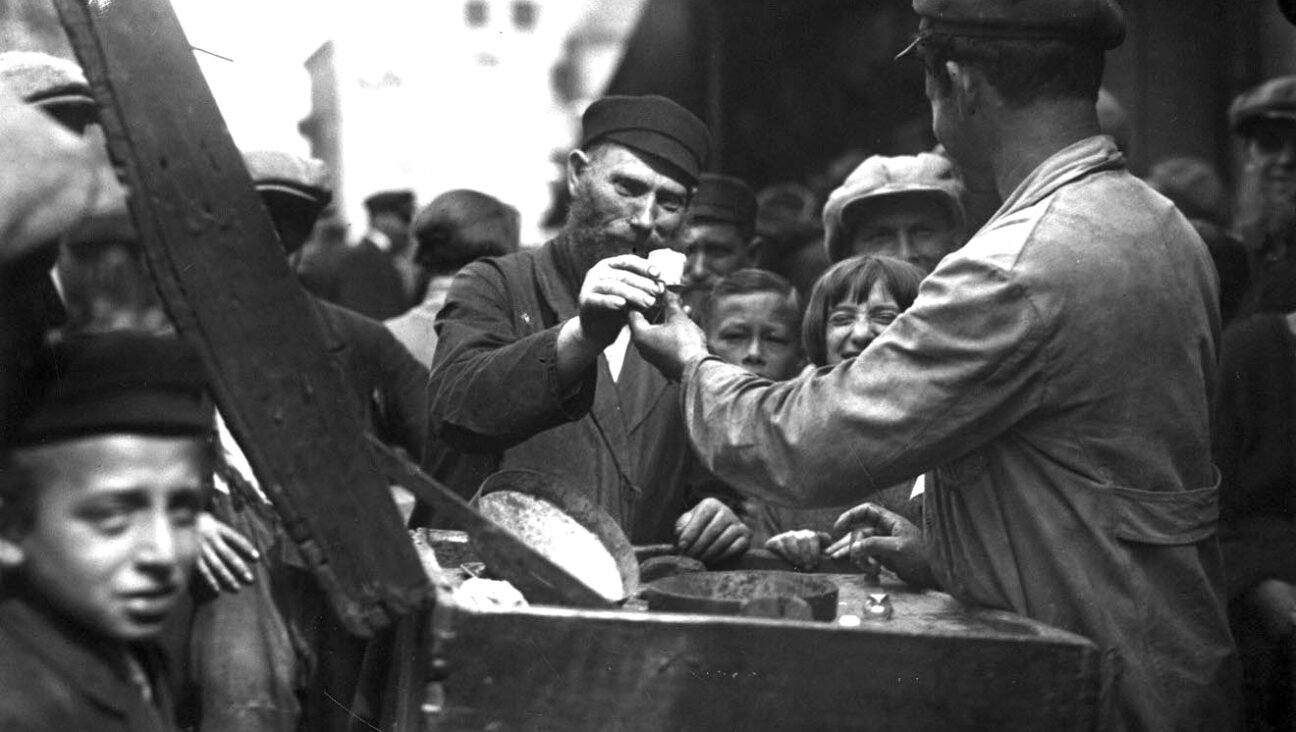Remembering How the Yiddish Theater Turned Into Broadway
Last fall, a musician friend who plays on Broadway took me to see the Folksbiene Yiddish Theatre’s revival of “On Second Avenue,” a revue chronicling the glory days of Yiddish theater in New York City. As one might expect, the show was heavy on nostalgia. “But the Yiddish theater didn’t really die,” my friend commented after the curtain came down. “It just turned into Broadway.”
That, in a nutshell, is the premise underlying this year’s Folksbiene gala fund-raiser. The event, Broadway Salutes Yiddish: A Benefit for the Folksbiene Yiddish Theatre, is scheduled for June 12 at Town Hall and will consist of two parts. In the first, old-school and new-school Yiddish theater veterans, from Fyvush Finkel and Leonard Nimoy to Tovah Feldshuh and Joanne Borts, will perform bits of classic Yiddish theater and song, accompanied by the Zalmen Mlotek/Frank London Orchestra. In the second, original cast members from the Broadway musicals “Jersey Boys,” “Mamma Mia!” and “Movin’ Out” will perform alongside the Billy Joel Band, minus Billy Joel. Rounding out the Second Avenue-to-Broadway theme, Broadway producers Richard Frankel (“The Producers,” “Bubbe Meises,” “Bubbe Stories”), Harold Prince (“Fiddler on the Roof”) and Emanuel Azenberg (every Neil Simon play since 1972) will serve as honorary co-chairs of the event.
According to Mlotek, executive director of the Folksbiene, the gala will inaugurate a national membership drive for the slightly renamed Folksbiene National Yiddish Theatre. The theater now boasts a touring company, Mama’s Loshen Kugel, dedicated to bringing Yiddish theater to communities around the country, and there is talk of finding a new home here in New York City with space for exhibits on the origins of Yiddish theater. (The theater currently mounts its productions at the JCC in Manhattan, while its administrative offices are located in the Workmen’s Circle/Arbeter Ring building on East 33rd Street, a building that also houses the offices of this newspaper.)
The link between Yiddish theater and Broadway, and between Yiddish theater and American entertainment in general, is hardly abstract. This is not (or not just) a matter of stereotyped Jewish characters — the beleaguered papa, the guilt-inducing mama, the fast-talking shyster and the neurotic shmendrik — having become standard theatrical archetypes, or of a vaguely Jewish sensibility having filtered into American comedy at large. As Mlotek pointed out in an interview, a number of popular performers, from Sophie Tucker and Molly Picon to Paul Muni and Walter Matthau, made their bones on the Yiddish stage before achieving success in English-language theater and film. And Broadway types like Lionel Barrymore and Sarah Bernhardt often went downtown to check out their Yiddish colleagues.
While Yiddish performers didn’t invent the melodramatic style that became their hallmark, it’s easy to see how their over-the-top mannerisms might have reinforced similar tendencies in English-language theater, especially the kind that made its way to Broadway via vaudeville. The line between Boris Thomashevsky and Nathan Lane may not be straight, but one can draw it nonetheless.
Leonard Nimoy, best known as Mr. Spock of “Star Trek,” illustrates just how porous the boundary between Yiddish and English theater once was. As a young actor in Boston, Nimoy started out with English roles. But his early grounding in Yiddish came in handy when he moved to Los Angeles to pursue a career in film and television. “My grandparents spoke very little English, so my brother and I learned to speak Yiddish to communicate with them,” he told the Forward in an interview. When Yiddish touring companies visited the West Coast, Nimoy often played the juvenile roles, working alongside such distinguished Yiddish actors as Chaim Tauber and Maurice Schwartz. “It was an incredibly wonderful learning experience,” recalled Nimoy, who intends to tell the gala audience a few stories from his days on the Yiddish stage and to sing a little, as well. Even now, Nimoy retains a soft spot for Yiddish spectacle. “When I see or hear a Yiddish production, I’m very touched by that; it takes me home,” he said.
Fyvush Finkel was one of the last actors to migrate from Yiddish- to English-language work. “I spent three-quarters of my life in the Yiddish theater,” the 82-year-old actor said. Finkel made his debut singing on the Yiddish stage in 1932 for $1 a night and didn’t land his first English-language role until 1965, in “Fiddler on the Roof.” “I went in there making less money than I made on Second Avenue,” he said. Finkel, who plans to sing and perhaps do a little dancing at the Folksbiene gala, remembers when 25 cents was enough to buy an evening of Yiddish vaudeville on the Lower East Side’s Clinton Street. “I still miss the audiences that used to come to the Yiddish theater,” said Finkel, whose own fans showered him with more than just applause. “I used to bring pots of food home. It was kosher, and it was delicious.” The decline of Yiddish theater in the 1950s and ’60s eventually led Finkel to look elsewhere for work; and since landing his first television role in the CBS series “Picket Fences” back in the early ’90s, he has become a bona fide English-language star. But his heart, like that of many who will perform at the Folksbiene gala, still beats in Yiddish. “I’m proud to be a Yiddish actor,” Finkel said. “And I always will be.”
Alexander Gelfand is a writer and musician living in New York.
















